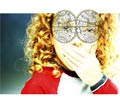 Teacher Guide
to Using Maps
Teacher Guide
to Using Maps
Reading maps is fast becoming a lost art, since most people now have GPS units in their vehicles and even on their boats. Maps are like pictures of an area from above. But unlike Google Earth, which actually is a picture, maps basically just show the streets and their names, to help you get from point A to point B.
Maps have symbols and more information that make them more easily understood. A map will show the street you live on, and all the streets that someone will need to get to your house from wherever they happen to be. Maps generally record other types of information as well, about places, people and things.
Since Earth is round, globes give you the picture of the planet that is most accurate, but you can't use them to find your way from one point to another. Maps that are flat are less expensive, and more easily used. They can show a given area in more detail, and for this reason, maps are widely used for directions.
Reading maps is a skill you can easily develop, since map language is simple. Good maps will have instructions on them that help you to track where you are going from where you are now. Once you are familiar with map language, you can find out about an area, or about how to get to a place you need to be.
Maps at their most basic level help you to find specific locations or places. You determine where you are starting from first, and then everything on the map can be described as being the proper direction and distance from your location. You'll notice that maps are always drawn out with North, South, East and West in the same directions.
Imaginary lines cross the Earth at regular intervals, with one set that runs west to east, and one from south to north. These are called latitude and longitude, and are described in degrees. Map makers use these lines to tell a person not only what direction you live in, but how far in that direction to go.
Map grids are also often listed with another grid to make them easier to read, with letters going one way and numbers going the other. For an example, to find a spot within C16 on a map, you will trace from A to C with one hand and from 1-16 with the other, and look at the box where they meet.
Maps will also tell you the direction you are going. Almost all maps have North at the top, but North actually goes up, as in away from the map. On flat maps, a compass or arrow printed on the map will help you find North, and the other directions.
When you become good at reading maps, you will find that they also tell you more than which way to go. They tell you how far to go. Most maps you use will have everything to "scale", so that you can tell how far in miles or kilometers you will need to go. In order to find out the distance you need to travel, mark the difference between where you are and where you are going, and then use the scale to tell you how many miles it is.
You can also use Yahoo maps or Google maps online, which will show you a flat map on the computer or smart phone screen, as well as telling you which ways to turn on which streets. These can be printed out, and they are quite useful for you if you don't have a GPS unit to use for directions.